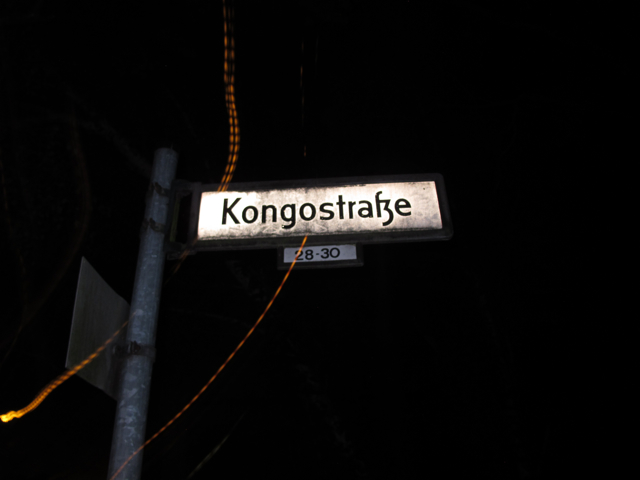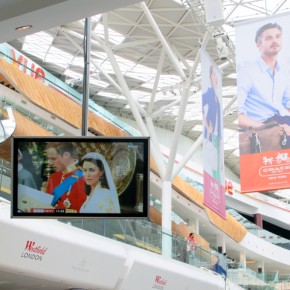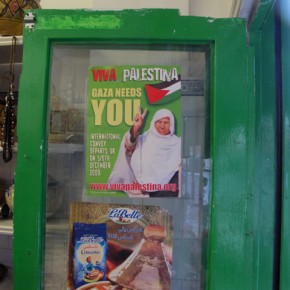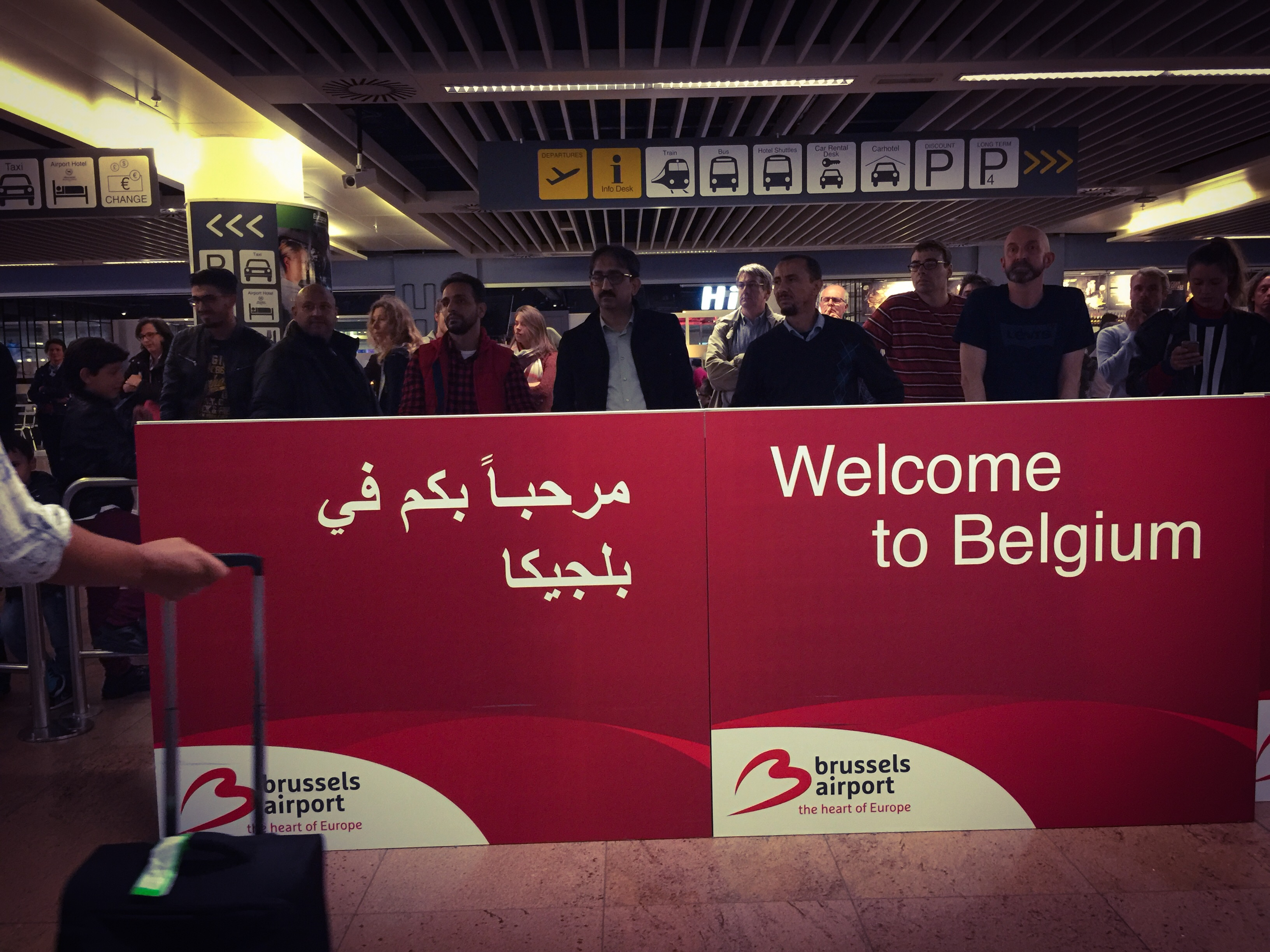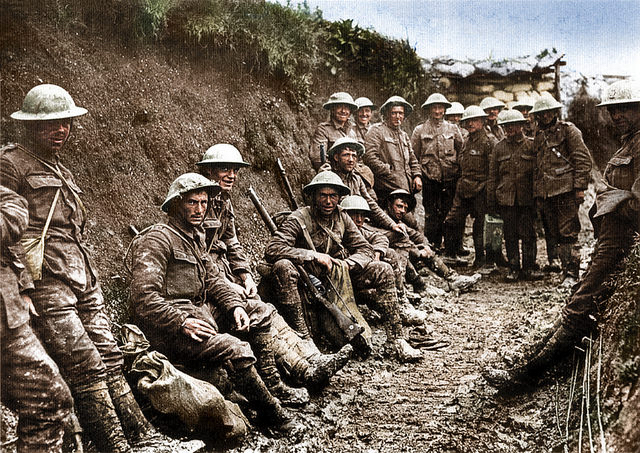Berlin’s U6 train stops at some lesser-known local oddities. African Streets station – a nondescript platform in Wedding – seems strangely ordinary given its history. Döner shops. Sports bars with frosted windows, and occupants with frostier stares. Names on doorbell buzzers betray a big mix of peoples. Croatian restaurants are in vogue here, whilst the window of a Middle Eastern restaurant advertises Türkische Pizza.
Exiting the U-Bahn, Swakopmunder Straße is a leafy residential street named after Swakopmund, a port in Namibia. Nearby Togostraße intersects with Windhukerstraße, another residential street with a Namibian root to its name.
These are the streets of the African Quarter, a project of Carl Hagenbeck. A wild animal merchant, Hagenbeck’s intention was to found a permanent exhibition in the Wedding-Rehberge district to display the animals and peoples of Germany’s African colonies. Hagenbeck’s human zoo was never realised – the outbreak of the First World War putting paid to his plans. Yet the street naming continued. The Weimar Republic saw the additions of Ugandastraße, Dualastraße, and Sambesistraße among others. The Nazi-era addition of Petersallee still remains, although the Peters it now commemorates is a post-war conservative politician rather than the colonial general whose brutality in German East Africa led to his dismissal in 1897. Ghanastraße, a 1958 addition, commemorates Ghanaian independence. A more recent explanatory sign of the streets’ history has appeared on Otawistraße. A passerby on nearby Kongostraße was less forthcoming. “The street names? Don’t know. Well, we have our own jungle over there,” he mused, thumb jerking towards the wilds of the Togo Colony Park.
Auf Vorposten für Deutschland was one of the stranger books in the eclectic Nuremberg bookshop I had visited a couple of years before. Passed the black-white-red German Imperial Flag on the cover lies a land of bold assertions and bolder Fraktur typefaces. A 1935 eulogy to Germany’s colonial past, it mourns the loss of Germany’s African and Asian colonies. “The hour of separation has come” reads the final paragraph. “Love and adoration […] of the loyal black soldiers chains them to their superiors. They are not ashamed of their tears, and a single cry resounds across from the natives to the retreating Germans – ‘Wann kommt ihr wieder?’- When will you return?” A photograph shows three African soldiers of the Kameruner Schutztruppe. They stare, blankly, at the camera, from a distance the reader could never have hoped to cross. On the front page, a handwritten addition reads, “On your sixteenth birthday, from your comrades.” The Günter Grass lookalike at the till removed his bifocals and squinted at the front cover. He put them back on again and squinted. “Ten Euros,” he said.

I could have seen the book as an eccentric irrelevance, but the role it had once played as a birthday present to a sixteen-year-old gave it a deeper resonance. A word such as Vergangenheitsbewältigung (“coming to terms with the past”) – one which Mark Twain would have doubtlessly described as “not a word, but an alphabetic procession”- recounts Germany’s making amends for its lesser-known and brief colonial past. In 2004, Germany acknowledged the genocide of the Herero and Namaqua people in present-day Namibia, though ruling out financial compensation. Germany’s great awareness of its past and acquiescence of guilt has come to form an important part of post-war German identity. As I write this, the poppies in lapels across the United Kingdom give me pause for thought. An equestrian statue in the city where I study honours Sir Redvers Buller. ‘He saved Natal’, reads the inscription (though the traffic cone which often crowns Buller is of much higher interest to passerby.) Brazen, curt, unapologetic- a quintessentially English nod to a dark colonial legacy.

In contrast, Germany’s post-war introspection has already led to some cartographical changes. For some, the overgrown foliage of the Togo Colony Park and the backalleys of the African Quarter represent darker thoughts left in urban shadows, calling to memory the worst excesses of Germany’s brief ‘place in the sun’, as von Bulow called the Imperial Colonies in 1897. A street in Kreuzberg (where else) is a particular case in point. May-Ayim-Ufer has since 2011 honoured the Afro-German poet, not Brandenburg slaver Otto Friedrich von der Groeben.
Yet the retrospection stretches still further- Mohrenstraße, the ‘Street of the Moors’, was home to twelve African slaves demanded by Friedrich Wilhelm I, the King of Prussia, in 1720. The street, claim African organisations in Berlin, perpetuates a ‘perception of the European imagination that sees Africans as stupid, uncultured, lazy, with no history, as servants of Europeans’. Moor Street, however, remains Moor Street, as does its U-Bahn (which at various stages during the Cold War also bore the names of Communist luminaries Otto Grotewohl and Ernst Thälmann). Moors, it would seem, are a legacy which can be lived with. No letterheads will need updating just yet.
“The street names of a city,” pointed out historian Götz Aly, “document the mindsets, horizons of experience, mistakes and false certainties of the various epochs they represent.”
“The thoughtless, ideological street renamers of today – lack humility,” he continued. “They lack the ability to see themselves as fallible. They lack respect for the generations to come who will judge our own era with uncomprehending head-shaking or horror. It is a disgrace.”
The discourse surrounding the African Quarter works under the assumption that the colonial significance of its street names is seared, irrevocably, into the collective conscience of the neighborhood. Wedding is one of the poorest districts of what was West Berlin, with a large immigrant community, some 2500 Africans living in the African Quarter alone. Hagenbeck and Nachtigal would presumably be spinning in their graves at the very thought. Long may they do so, with ruthless colonial efficiency.
A dull rumble beneath Müllerstraße is the U6, onward towards Tegel Airport, passed African Streets. The dust-caked Transvaal Pharmacy has long since closed down, and nearby a drunk wanders deep into the darkness of the Togo Colony Park. A Cameroonian restaurant, the Bantou Village, on the appropriately named Kamerunstraße, is gradually filling up for community meeting- dishes of Ndolé, okra and cassava, hard-boiled exiles with simmering disagreements. The music is loud and the décor deafening. The Cameroonian colours grace the walls as my friend and I eat fried plantains, fish, and a fluorescent chilli sauce with attitude.
I ask again- why Kameruner, Togo and Kongo Straße?. I know what the streets are named after. But who they stand for still remains a mystery.
The Cameroonian waitress exchanges glances with the fish. The fish glances back.
‘These streets’ she wonders aloud ‘were probably named for us’
[Snorts of derision, or the Francophone equivalent, fill the next room. The debates have begun.]
“I mean, as you can see, there are a lot of us around.”
Photographs courtesy of Joel Schalit.
